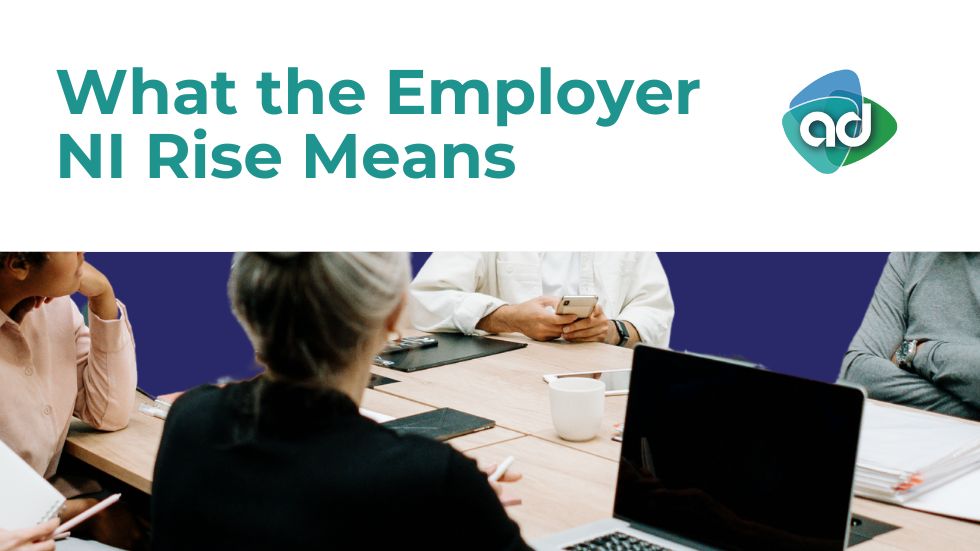The new tax year is here, and while many businesses are looking forward to a fresh start, there’s a bit of a storm brewing when it comes to staffing costs.
As of April 2025, Employer National Insurance Contributions (NICs) have risen from 13.8% to 15%, and the secondary threshold (the salary point where you start paying Employer NI) has dropped to just £5,000.
In plain English?
It’s going to cost you more to employ people – even if you haven’t changed a thing about their pay.
If you’re an established business with a growing team, now’s the time to sit up and take notice. A few simple steps now could stop you being caught out later in the year.
How will the changes affect your business?
Almost every employer will feel some impact, but some sectors are going to get it worse than others. If you’re in retail, hospitality, or care, where margins are tight and headcounts are high, you’ll likely notice the pinch quickly.
Even if you’re in a more professional services-based business (like consultancy, marketing or engineering), it’s still worth checking how your payroll numbers stack up. A couple of promotions or new hires could see your wage bill creeping up faster than you budgeted for.
According to the Office for Budget Responsibility, payroll costs are expected to rise by around 2% on average – but depending on your workforce structure, it could be more.
What should you be doing now?
1. Review your payroll costs
Don’t just assume everything’s ticking along nicely. Take a fresh look at your payroll – and not just salaries, but Employer NI, pension contributions, bonuses and benefits too. If you’re working with an accountant (hello! 👋), they should be helping you model the extra costs.
2. Check if you qualify for extra help
The Employment Allowance has gone up to £10,500 this year – double the old amount. That’s a tax break worth claiming if you qualify. (Quick reminder: single-director companies with no other employees still don’t qualify – sorry!)
3. Consider smarter benefits
Rather than hiking up wages and adding even more NI costs, you might want to think about offering tax-efficient perks like salary sacrifice schemes (e.g., Cycle to Work, electric car schemes, childcare vouchers). These can be a win-win: better benefits for your team, lower costs for you.
4. Think about your workforce structure
Is it time to rethink how your team is set up?
- Part-time or flexible roles could help manage payroll costs better.
- Freelancers or contractors (careful with IR35!) might make more sense for some roles.
- Outsourcing non-core functions like IT, HR or marketing can also free up cash.
Every business is different, but if you’re making staffing plans for 2025/26, you’ll need to build these rising costs into your forecast.
Why it matters now
It’s tempting to think, “It’ll all balance out” – but small shifts now could lead to a cashflow crunch later, especially with the usual summer slowdown some businesses see.
Getting a grip on the numbers early means you can plan smarter – whether that’s adjusting prices, reviewing expenses, or finding efficiencies elsewhere. Businesses that leave it too late could find themselves forced into making tougher decisions when margins get squeezed.
At Accounts Direct, we’re here to help you stay ahead of the curve – not just react when the pressure’s on. We can review your payroll, run cashflow forecasts, and help you find ways to manage your staffing costs without hurting growth plans.
Need a hand?
We’re a friendly bunch, and we’re dead serious about helping northern businesses thrive.
✅ Clear advice.
✅ Practical planning.
✅ No jargon, no faffing.
Give us a call today if you want to chat through your numbers – and make sure you’re set up for a strong 2025.

